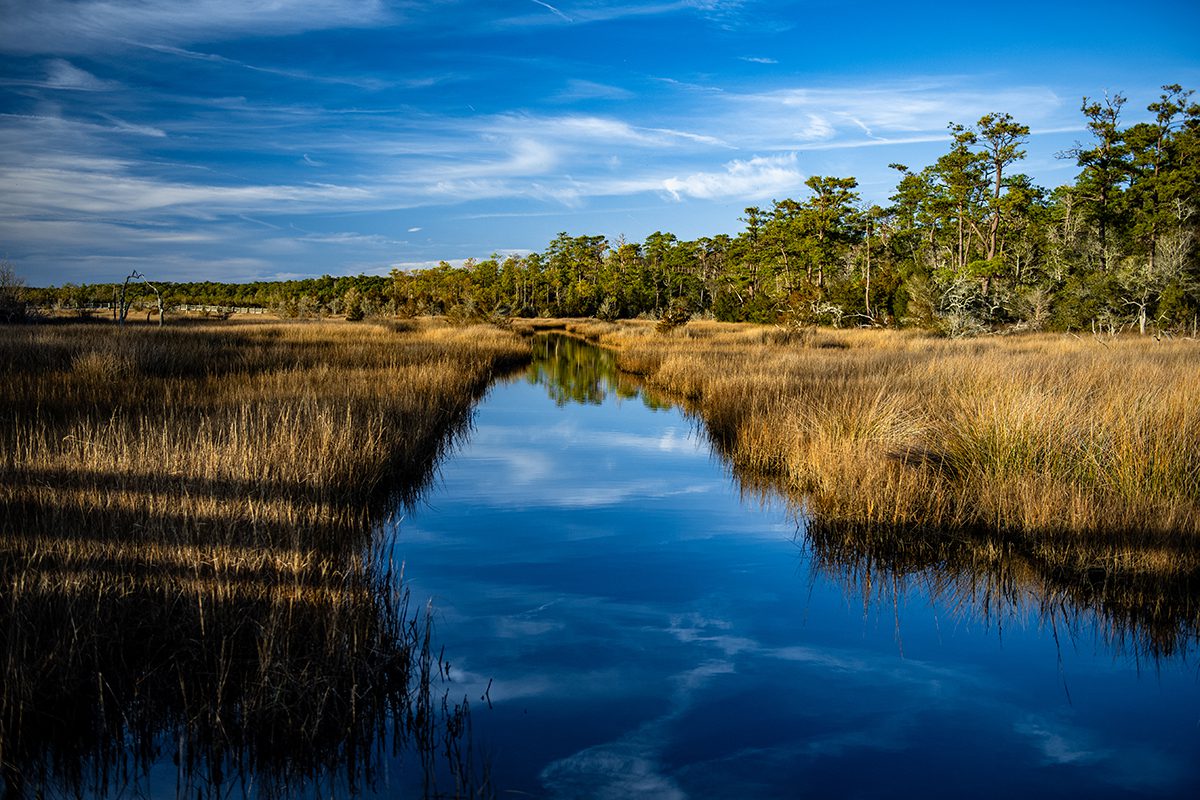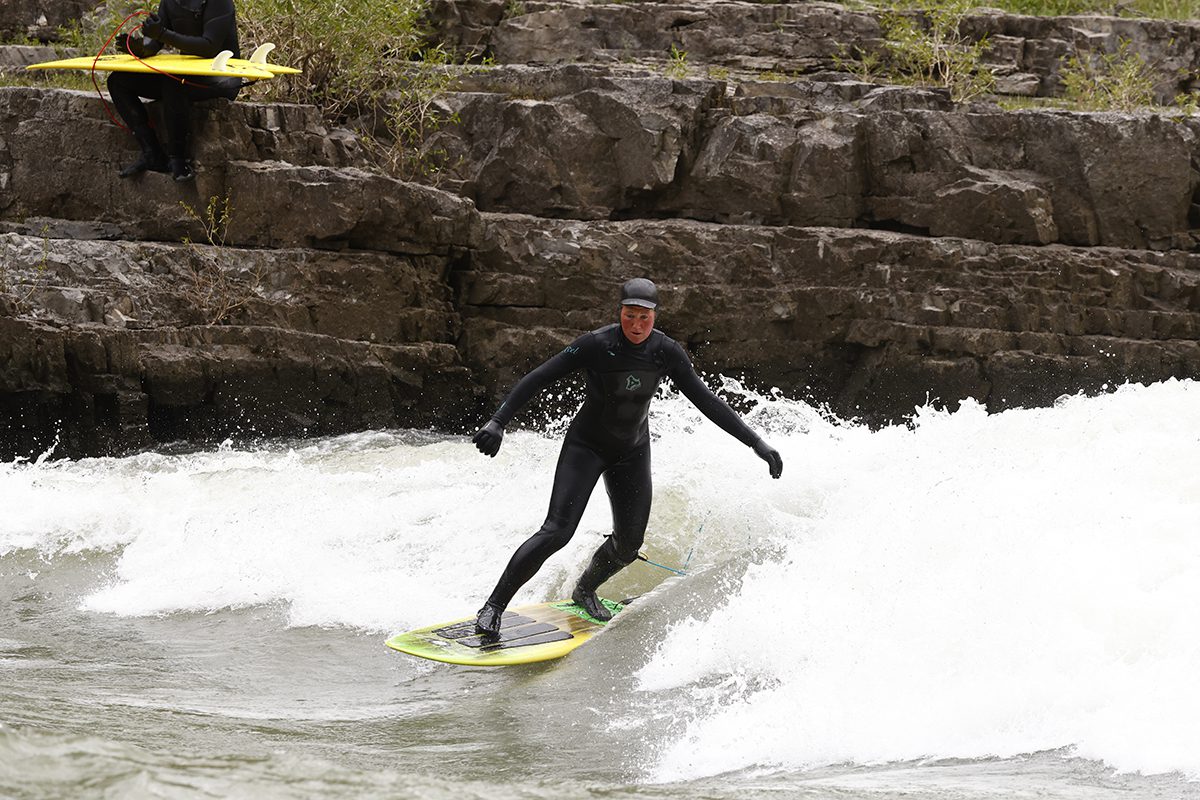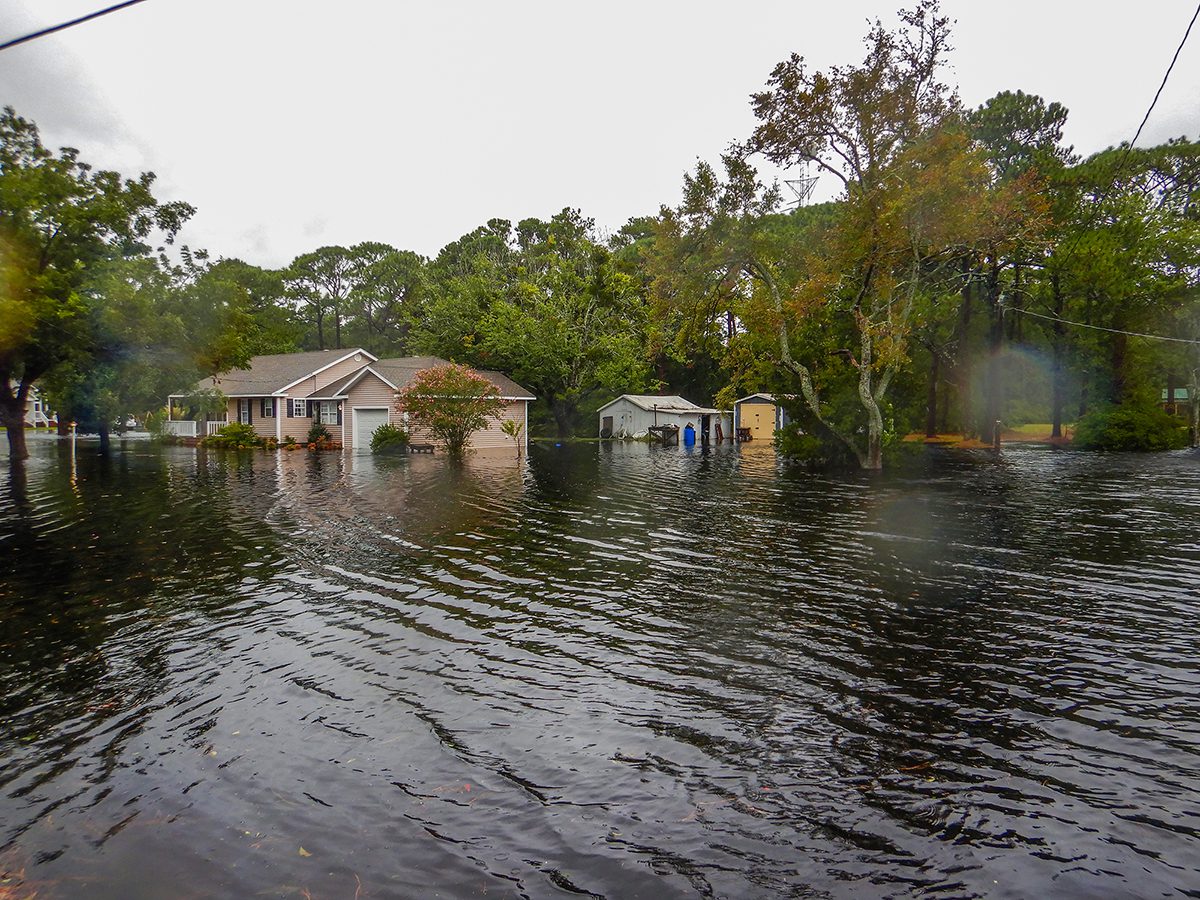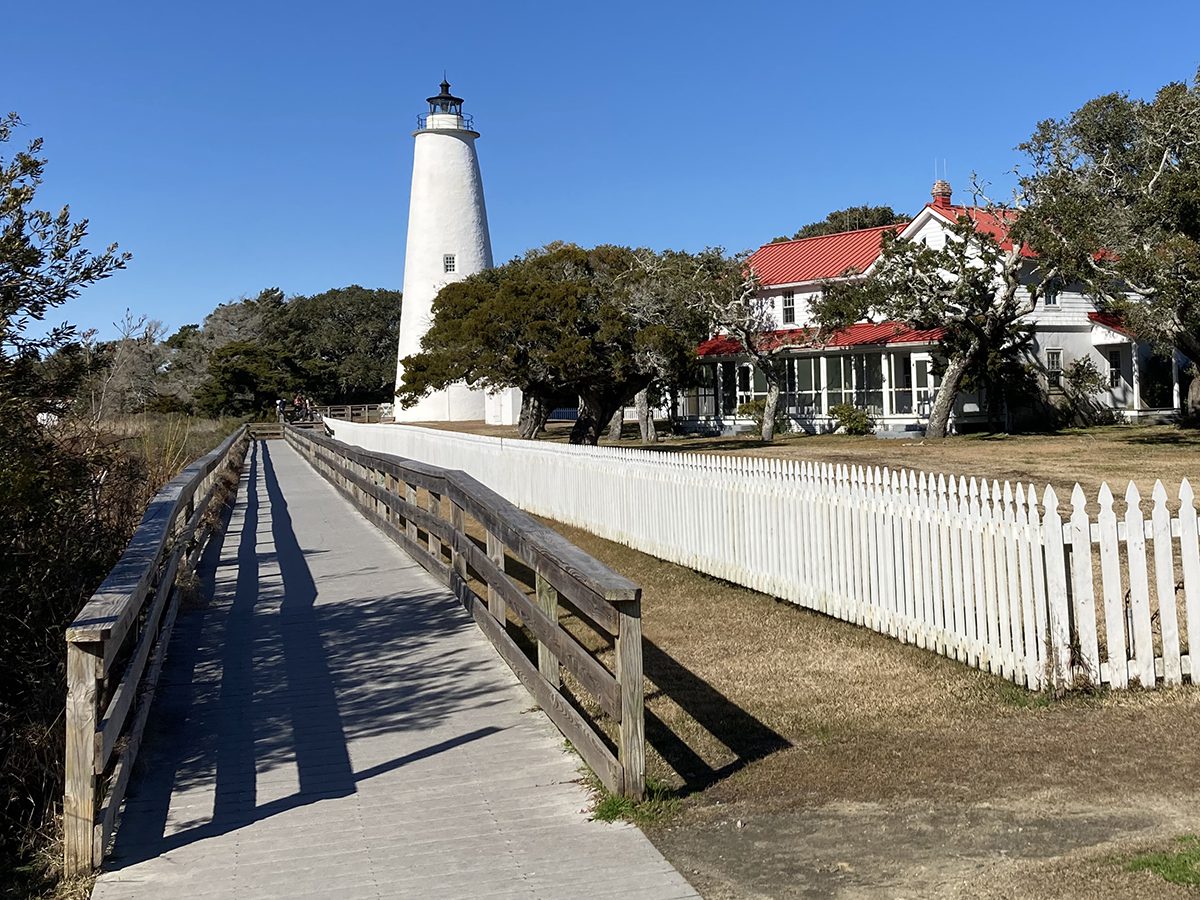
OCRACOKE VILLAGE — As islanders and National Park Service personnel have been busy in recent weeks preparing to celebrate Thursday the 200th anniversary of the Ocracoke Lighthouse, the beacon stands as a stoic symbol of the very island itself: sturdy, enduring and vulnerable.
For those not already on the island, the Ocracoke Light Station 200th anniversary event set for 1-2 p.m. Thursday will be livestreamed on Facebook by Outer Banks Forever, the Cape Hatteras National Seashore’s official philanthropic partner.
Sponsor Spotlight
The nation’s second oldest continually operated lighthouse, a cherished centerpiece of the village, was damaged when an astounding 7-foot surge of water from the Pamlico Sound was blasted ashore by Hurricane Dorian Sept. 6, 2019. Villagers called it the worst flooding in memory, 2 feet higher than ever before.
You may also like: Ocracoke museum to boost collections care
After two years of planning by Cape Hatteras National Seashore, including community meetings, discussions and review, the Ocracoke Light Station Preservation Project has been approved and funded. A contractor to work on the chosen alternative, which involves mostly elevation of the keepers’ quarters and repair of the lighthouse, is expected to be selected later this year.
Congress appropriated $2 million to the National Park Service in September to renovate and repair the Ocracoke Light Station.
Sponsor Spotlight
“Most everybody, like 98%, thinks they’re doing what the community wants them to do, as a whole,” John Simpson, an 11th generation Ocracoker, told Coastal Review.
The station’s 75-foot-tall Ocracoke Lighthouse, oil house, keepers’ quarters and ancillary buildings were completed in 1823.
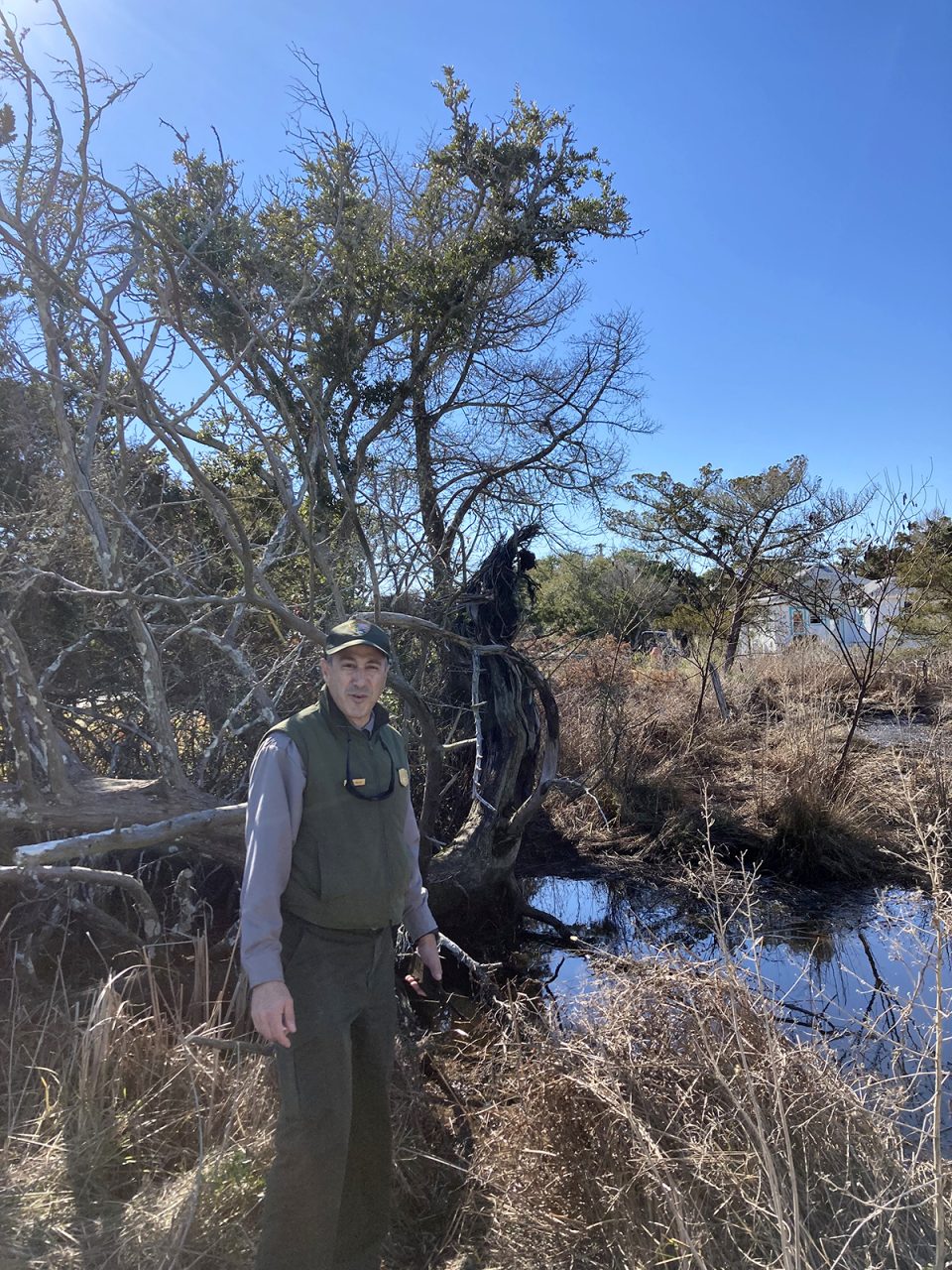
An early option to relocate the lighthouse station — an idea Simpson said was more rumor than an actual consideration — was immediately tossed.
“I don’t think, personally, that was ever brought to a meaningful discussion,” he said. “You talk about a rebellion — the lighthouse means a lot to the folks that live there.”
When Simpson was in high school, his father retired from the Coast Guard and his family moved into the house his mother had inherited that was situated “due north along the creek on the Silver Lake side.”
Nearly every night, unless it was foggy, the beam of the lighthouse shined into his window, he recalled fondly.
“It was like a nightlight,” he said.
Many people on the island have their own personal connections to the lighthouse.
For Simpson, he is proud that his great-grandfather Joseph M. Burrus, known as “Cap’n Joe,” served there as a light keeper from 1929 to 1946. A Hatteras native, he decided to build a house on Ocracoke Island after retiring from 45 years in the U.S. Lifesaving Service. For a while when his father was young, Simpson said that his father and his family had lived in the keepers’ quarters with Cap’n Joe.
Simpson recalled a story his father had told him about the Great Atlantic Hurricane in September 1944, which until Dorian, he said, was the “benchmark storm for Ocracoke.”
“My dad said, ‘Son, I would never have believed it if I hadn’t seen it with my own eyes,’” he recounted. “Across the street was a wooden skiff with a pig and three adults in it. The water picked up that wooden boat, brought it over the (lighthouse station) fence, put it in the yard and left them there high and dry.”
Dorian’s tide was 11 inches higher than that devastating 1944 storm.
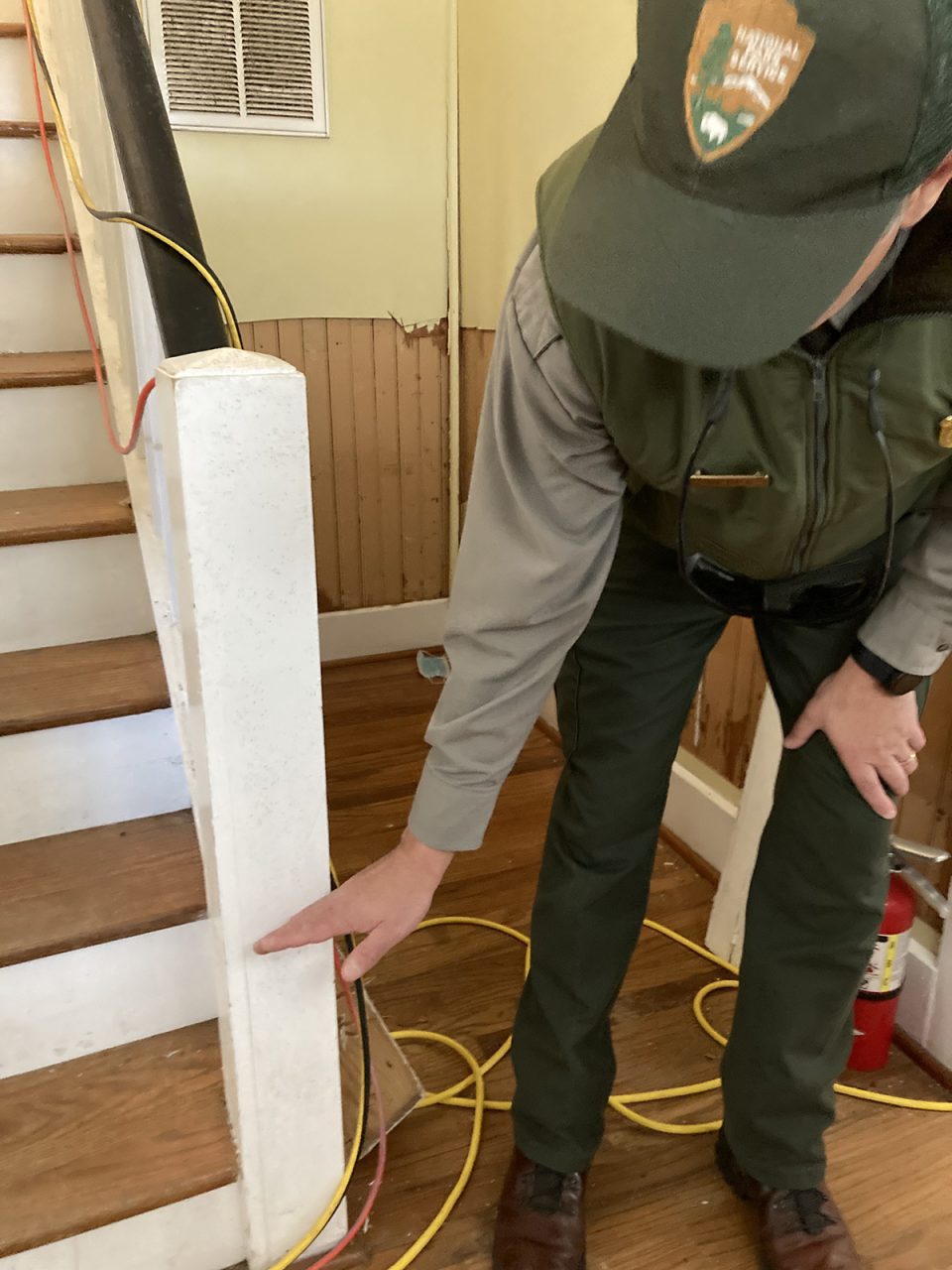
Along with nearly every vehicle and building in the village, the entire light station was flooded. The grounds and walkways were completely submerged, and the base of the lighthouse, the double keepers’ quarters and five outbuildings were inundated with as much as 24 inches of brackish water.
“There was 18 inches of floodwater in the old keepers’ quarters,” Cape Hatteras National Seashore Superintendent Dave Hallac said in March 2021, months after Hurricane Dorian. “The shed got lifted up and floated off from the foundation.”
But the Ocracoke Light Station, which was added in 1977 to the National Register of Historic Places, is barely above sea level and situated next to a marsh. Its water table is so high that it is technically considered a wetland. Unless there is a dry spell, the station’s lawn is mushy and often impossible to walk on without getting wet feet.
“I’ve only been superintendent for six years and it’s flooded or practically flooded three times,” Hallac added.
With Dorian, the water roared through the station at a height of 6.7 feet above mean sea level.
“It came up super fast and it went down super fast,” the superintendent said while showing the damage at the site in February 2022. “But the damage was done.”
The power and water pedestals were all destroyed, requiring replacements of everything. The interior of the structure had to be cleaned of mold and dried out. Floorboards had to be removed. The wallboard had to be ripped out. Heating and air conditioning units were flooded; the new ones were installed higher. Thirteen park service vehicles were flooded.
“Nothing escaped the flood from Dorian,” Hallac said.
In addition to the chosen alternative from the environmental assessment approved in August, the park service had proposed simply following the existing management plan to repair storm damage, or removing the double keepers’ quarters and replacing it with a ghost structure that mimicked the existing building.
Regardless of the alternative chosen, the shotcrete on the lighthouse’s exterior bricks was slated to be replaced with a breathable coating; damaged masonry would be replaced; existing windows would be repaired or replaced with historically appropriate windows; leaks at the top of the lantern would be fixed; the interior would be repainted or recoated; and the original stone foundation would be exposed.
As Hallac noted during public presentations and discussions, the situation with ongoing and increasing sea level rise will increase flood risks on the island, including at the light station.
Recent data from the National Oceanic and Atmospheric Administration indicates that the mid-range rate of sea level rise in Ocracoke is 1.14 feet in 2030, 1.8 feet in 2040 and 2.5 feet in 2050.
“This is not storms, this is not king tides, this is just everyday tides,” Hallac said.
In discussions about sea level rise, he added, people often focus on what is going to happen in the future. “And I say, ‘No — it’s happening now.’”
Simpson said he and most other folks on the island understand that the environment is changing, but preserving what they can is important. “Still, Ocracokers are used to doing the best they can with what they’ve got,” he said.
Going back centuries, adaptation is built into the mindset of islanders.
As he sees it, the Ocracoke Lighthouse embodies the heritage and deep roots of the island community. With the stout white tower still keeping watch over the village after two centuries of wars and storms while blinking its welcome to boats coming into Silver Lake Harbor, islanders have to believe that they — and the lighthouse — will continue to survive.
“You hope and pray you never get that one shot that devastates everything,” Simpson said. “This is our little cubicle of life. We live and die by the weather conditions.”




